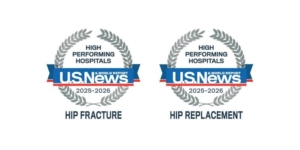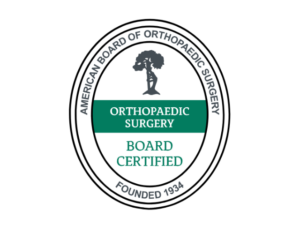Not Happy after a partial or total knee? Figuring out what is Wrong
Most patients who undergo partial or total knee replacement are delighted and grateful with their relief of pain, improved mobility and improved quality of life. Sadly, not everybody: 15-20% of patients after total knee replacement are not happy after their surgery. While the percentage is less after partial knee replacement, some patients continue to feel discomfort and are unhappy.
The happiest patients after total or partial knee replacement are those where their leg has been aligned to match the alignment of their leg before they developed arthritis. The complex soft tissue sleeve that supports and guides our knee through its movement has been optimally balanced. The knee components which were implanted are appropriately sized and are stable against the bony skeleton (that is, they are not loose). And critically, that their knee is not infected. When any one of these “variables” is not satisfied, very possibly a patient with that knee replacement (partial or total) may not be happy.
Unhappy patients often complain that their knee is painful, feels stiff, that their range of motion is restricted, or their knee feels unstable. There are a lot of reasons why this can occur. If the specific “valuables” causing their unsatisfactory result can be identified, then correcting these “variables” can potentially relieve their symptoms and allow them to have a very satisfactory or even excellent result. The key is figuring out “what’s wrong” so it can be corrected.
When I evaluate someone who is not happy with their knee replacement, my evaluation begins with a thorough history. I want to understand what their diagnosis was that led to their knee replacement. If there were any complications during or after the surgery which they are aware. Importantly, what are their symptoms now and when did they began. I review the surgeon’s operative note and implant record as well as any prior workup done by other doctors who were trying to determine the etiology of their complaints. These includes bloodwork, bone scans and possibly imaging studies.
I observe someone’s gait, which often gives me a clue as to what is wrong. I perform a thorough physical exam, including not just their knee, but also their hip, their other lower extremity, their back, a neurologic exam and assess their pulses and skin. All of this is critical. Was knee alignment optimally restored? Is the knee stable when tested in multiple planes and positions? Were there issues with the incision healing? Is there an effusion (water on the knee), general swelling, or any outward signs of infection? Areas of tenderness may also be a clue as to why someone is doing poorly after their knee replacement.
Quality X-rays are essential for the evaluation. They give important information regarding component alignment, sizing and if the components are loose or has moved (subsided) since they were first implanted. These include weight bearing images which show how the joint is being loaded. If the size of joint space is different on the inside compared to the outside of the knee, this can indicate that the supportive soft tissues are not balanced leading to instability and pain. Comparing x-rays of the knee taken immediately after the replacement to the most current X-rays can show changes which help explain someone’s symptoms.
Also, reviewing x-rays taken before the replacement to understand if a deformity was present, if it was corrected, and if the implanted components are optimally sized to reconstruct that person’s anatomy can help explain why someone is not doing well after their knee replacement. X-rays also allow determination of the type of fixation used to fix the components to the skeleton, cemented or bone-in-growth. Each method has potential benefits and potential problems. X-rays can show residual bone spurs or cement, or components that extend beyond the borders of the native bone which can irritate soft tissues and cause pain.
Infection must always at least be considered. Many times, it is subtle and often difficult to recognize. If infection is present and not recognized, then any further intervention will fail. It’s critical that infection is considered and ruled out to the best of our ability. Patients are routinely asked to obtain bloodwork, looking at inflammatory markers. If these values are elevated or their history and/or physical exam is suspicious for infection, then fluid from the knee is aspirated (removed). This fluid is sent for a culture and analysis. Occasionally fluid is also sent for a Synovasure study, which is a wonderfully sensitive test that looks at biomarkers which can be indicative of infection.
If infection is found it must be treated both with more surgery and antibiotics. If you have had a total or partial knee replacement and are not happy, then I recommend trying to find out why not. If the exact ideology can be understood, then hopefully it can be corrected so that you too can do well.
The Leone Center for Orthopedic Care at Holy Cross Hospital is located at 1000 NE 56th Street in Fort Lauderdale. For more information or to schedule a consultation please call 954-489-4575 or visit holycrossleonecenter.com.





